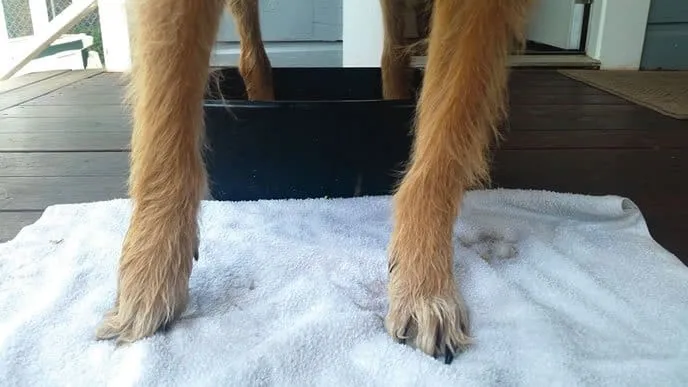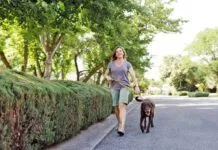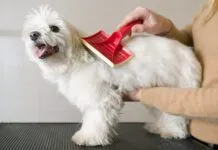For all classical conditioning procedures, do multiple repetitions of each step, feeding your dog a high-value treat (I like to use bits of fresh roasted or canned chicken) after each repetition. Only move to the next step when your dog becomes clearly happy at the previous step; this lets you know he’s made the association between the procedure and the high-value treat.
If he seems uncomfortable at any step, back up to the previous step until he’s happy again, and then figure out a smaller, intermediate step. In this exercise (wiping muddy paws), an intermediate step between Step 1 and Step 2 below might be to put pressure on the foot but not pick it up. Note that for proper classical conditioning, you present the stimulus first (for example, touching his foot), and then present the food. You want him to think that the touch makes the treat appear.
1. Touch your dog’s foot; then feed him a treat.
2. Hold his foot for a brief moment; treat.
3. Hold a towel in your hand (in front of him); treat.
4. Touch the towel to his foot; treat.
5. Holding the towel in one hand, lift and hold his foot for a moment; treat.
6. Holding the towel, lift his foot with your other hand, and touch his foot with the towel; treat.
7. Rub his foot gently with the towel; treat.
8. Rub his foot more vigorously with towel; treat.
The “Dog’s Choice” Approach:
When you train your dog to do any alternative method (in this case, for getting his paws clean), make the training process rewarding enough that your dog will happily choose to offer the behavior when you ask for it.
1. Start by training your dog to walk through a plastic tub with water in it. (Start with an empty tub and add water gradually if your dog is worried about the water). Use shaping, luring, or a combination of both.
2. Shape your dog to stand on an absorbent mat or towel to wick off the water. Alternatively, shape your dog to actually wipe his feet on the absorbent mat or towel to hasten the drying process.
3. Put the behavior (walk through tub and then stand or wipe paws on mat) on cue, so you can invite your dog to choose to perform it. If you have trained him well, he will happily choose to offer the behavior when you ask.
Learn more about how to train your dog to accept being touched for basic husbandry chores.









A request to be able to share to Pinterest too.